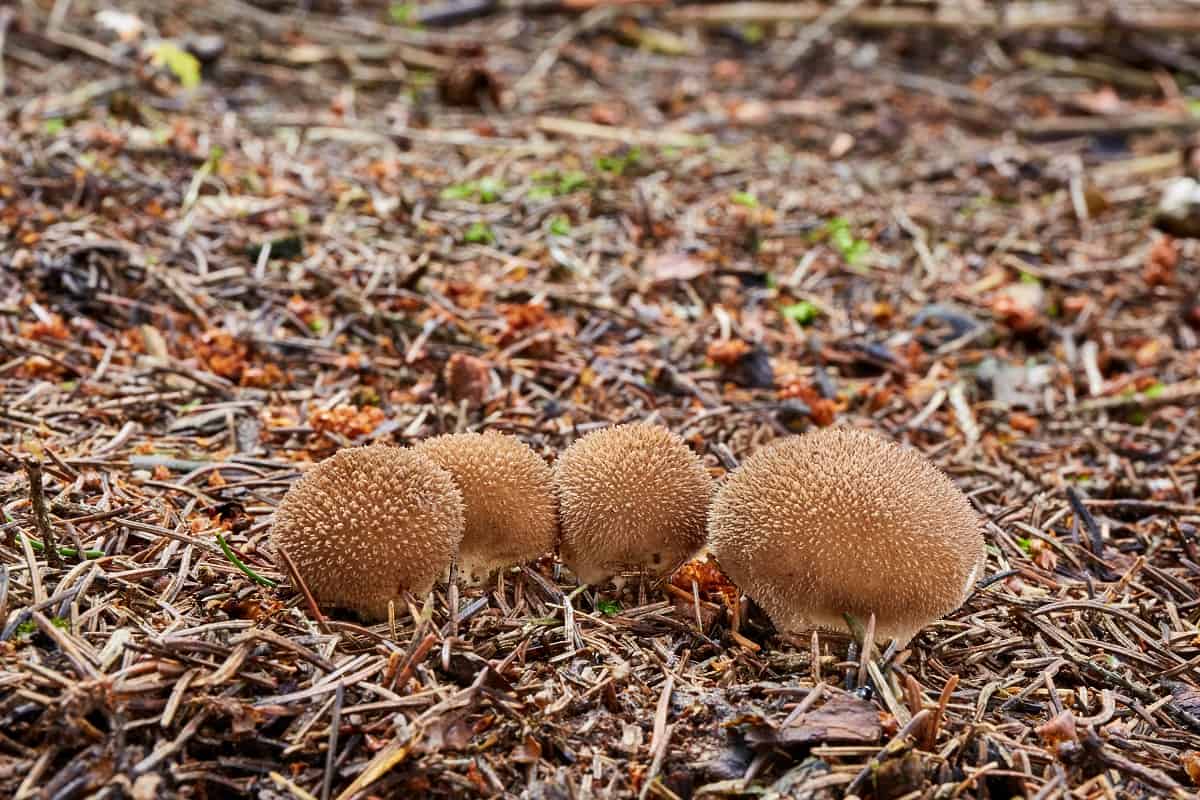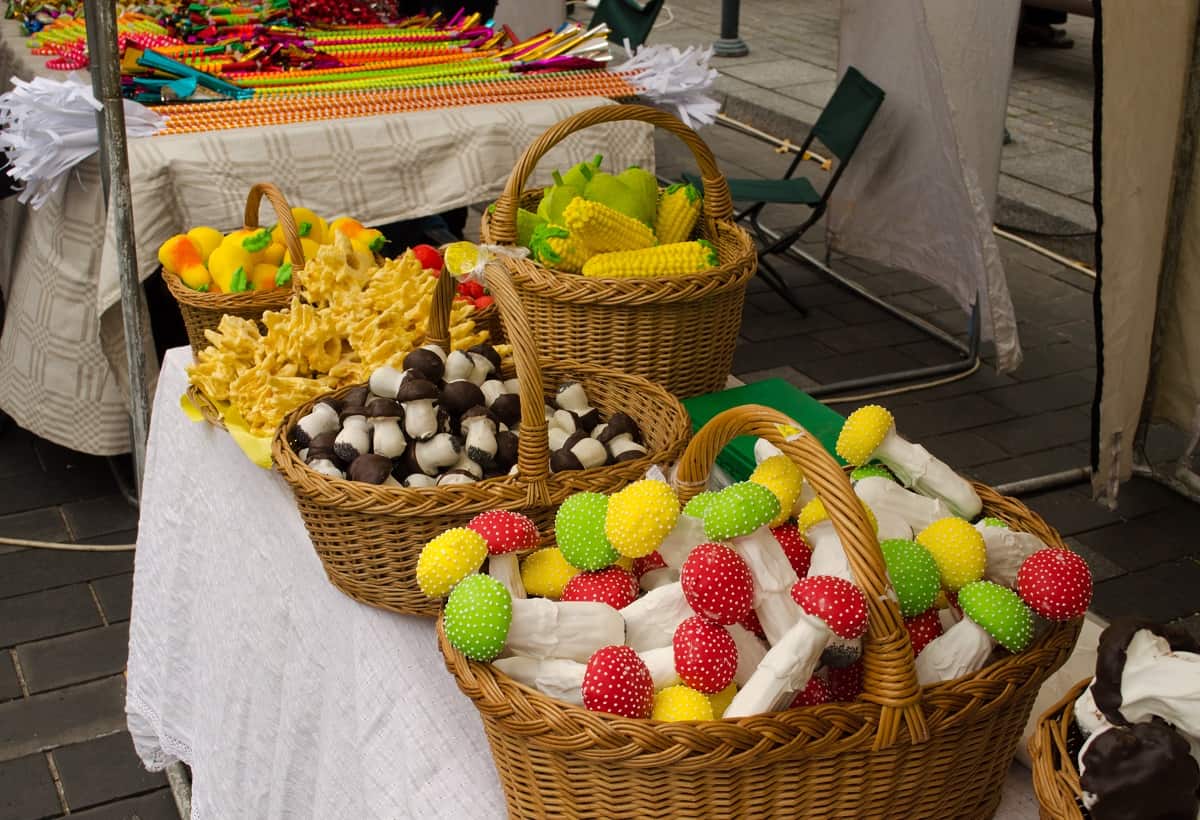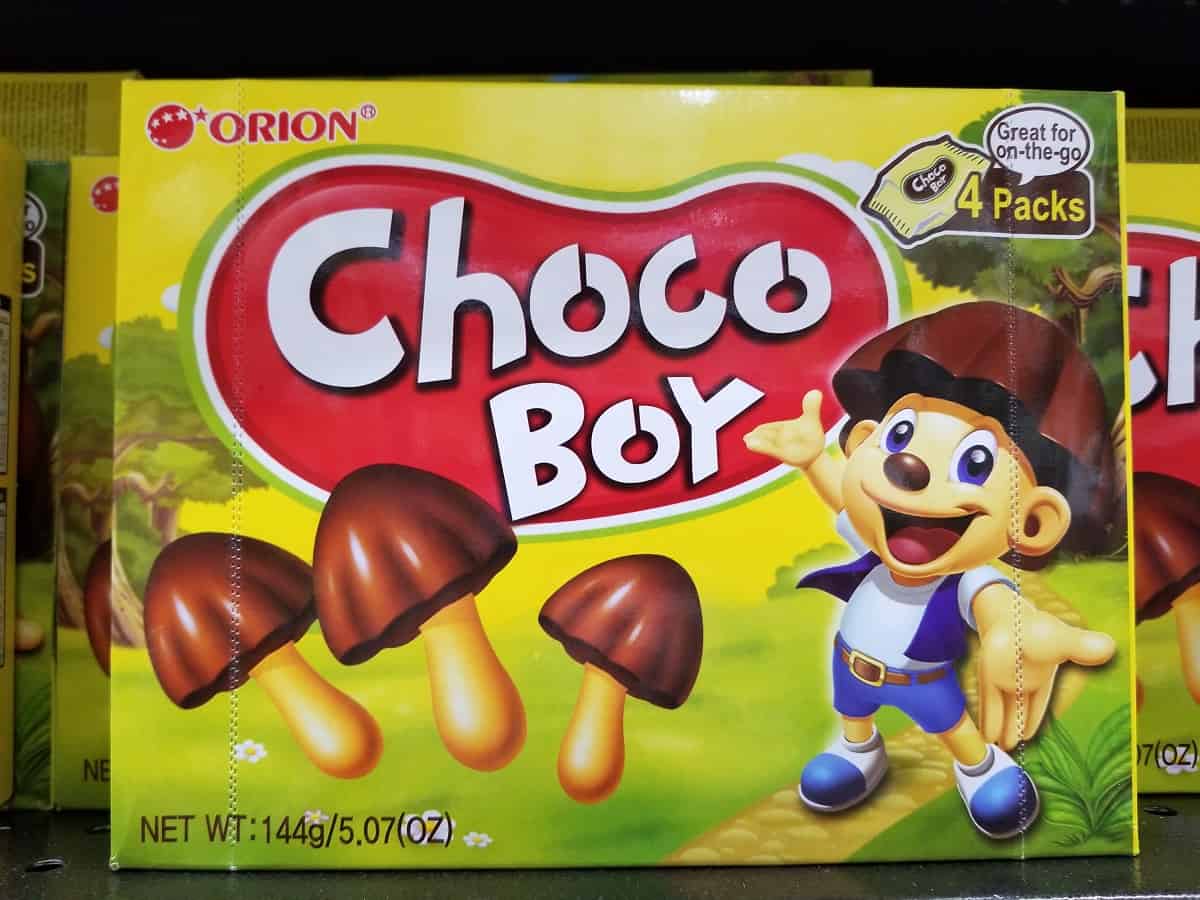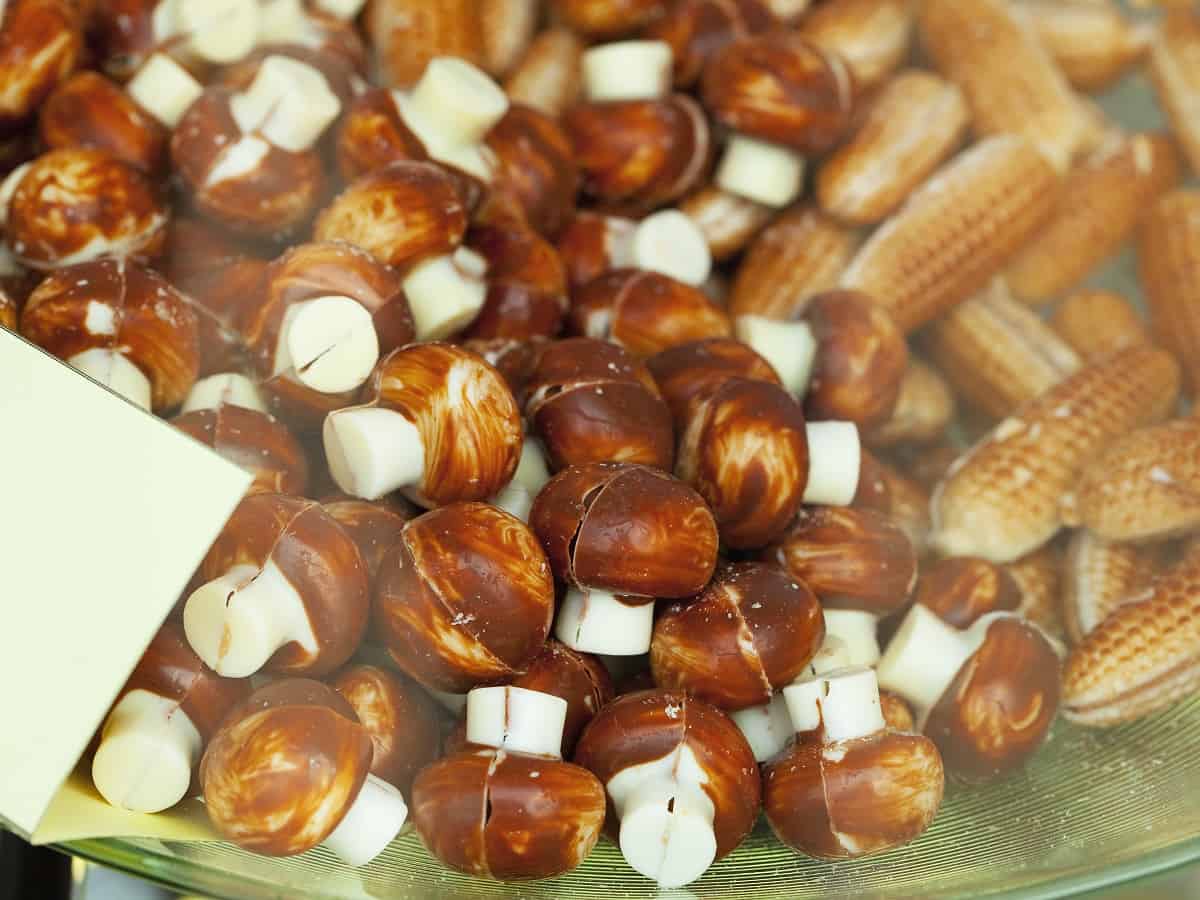Mushrooms have captivated the human imagination for centuries, not only as a versatile and healthy ingredient in our kitchens, but also as a symbol of nature's more whimsical side.
But while they're best known for their nutritional value, in recent decades mushroom-shaped chocolates and candies have also entered the market. These treats mostly consist of mushroom chocolate candies, colorful confections now found in every corner of the globe.
In this article we dive into the world of mushroom chocolates, from how they've become a favorite snack in South Korea to why they're found in some of the finest chocolateries in France.

Jump to:
🎓 History of Mushrooms and Chocolate
Mushrooms have long been an intrinsic part of human society, with various cultures having used them in culinary, medicinal, and even hallucinogenic applications.
For example, the indigenous people of North America used puffball mushrooms, referred to as simply a Calvatia genus, for wound remedy. The Egyptians and Romans also revered mushrooms as "Food of the Gods," as they believed these mushrooms could grant them immortality.

More recently, in the 1950's Mayan and Aztec descendants religiously using psychedelic mushrooms in Mexico revived its interest, drawing the attention of scientists, celebrities, and hippies who began flocking to Mexico in search of the magic mushrooms.
While this was an inciting event for the ban on many varieties of mushrooms, it also started a wave of renewed interest in mushrooms as a symbol for the nonconformist movement. This cultural phenomenon spread to and throughout Japan and have inspired various other mushroom-shaped confections globally.
🍫 What are Chocolate Mushroom Candy?
Mushroom chocolate candies range from mere mushroom-molded chocolates with luscious caramel centers to biscuit-stemmed chocolate mushroom caps. An example of these mushroom chocolates is Kinoko No Yama.
These are mushroom-shaped chocolate snacks - that don’t contain any mushroom ingredients - and are very popular in Japan and Korea.
The origin of mushroom chocolate is unclear, but we can thank the O.G. trendsetters, the French, for connecting chocolate and mushrooms into one.

When the French made chocolate “truffles,” back in the day people spoke of chocolate truffles and truffle mushrooms in the same breath. Curiosity eventually led to the creation of chocolate mushrooms.
On the other hand, cacao is harvested from the ripe cocoa pods of the Theobroma cacao trees, then goes through a process of fermentation, roasting, grinding, and pressing. Even chocolate mushroom candies contain this cacao, though not all are made purely of chocolate.

🍄 Best Brands of Mushroom-Shaped Chocolates
Meiji Chocorooms: this renowned Japanese confectionery company is famous for its chocolate products, including the beloved Meiji Chocorooms (Kinoko No Yama).
These treats feature a unique mushroom shape with a crispy cracker stem and a chocolate cap, available in both milk and dark chocolate varieties. They are known for their delightful taste and fun presentation, making them a popular snack in Japan and abroad.
Choco Boy: this is another brand that offers mushroom-shaped chocolates, popular in East Asia. These snacks consist of a biscuit stem topped with a chocolate cap, resembling a small mushroom, very similar to the Meiji version, like so many Korean candies.
Choco Boy chocolates are recognized for their playful packaging, often featuring the character of a smiling mushroom, and are a favorite among children and adults who enjoy light, sweet snacks.

Michel Cluizel's Champignons Caramel: a prestigious French chocolatier known for creating exquisite gourmet chocolates, Michel Cluizel makes these delightful Champignons Caramel, which are caramel-filled, mushroom-shaped chocolates with nougat forming the cap.
These confections are a testament to Cluizel's commitment to quality and craftsmanship, featuring a dark chocolate cap filled with almond crunch and a caramel base that resembles the stem of a mushroom.
The attention to detail in the shape and the combination of textures and flavors make these chocolates a sophisticated treat for those who appreciate fine chocolate artistry.


Apart from these, there are also artisanal and boutique confectioners that craft mushroom-shaped chocolates, often using high-quality ingredients and unique chocolate blends.
These chocolates may come in a variety of flavors, with some including gourmet fillings or being made with single-origin chocolate for a more luxurious tasting experience. They are typically found in specialty stores or as part of a chocolatier's specialty range.
Alongside them, it's also common to find mushroom-shaped marzipans and mushroom-shaped candies.

🙋🏻♂️ Frequently Asked Questions
"Kinoko no Yama" means "Mushroom Mountain" in Japanese, reflecting the snack's distinctive mushroom shape with a chocolate cap and biscuit stem.
The ingredients in Kinoko no Yama typically include a biscuit stem made from wheat flour, sugar, and shortening, with the 'mushroom' cap made from chocolate, which can be a blend of milk and dark chocolate.
Choco Boy candies originate from South Korea, where they are a popular snack, especially among kids, due to their playful shape and sweet taste.
Meiji Chocorooms are from Japan, where they are known as Kinoko no Yama and produced by the Meiji Group, a company with a long history in the country's confectionery market.

















Comments
No Comments